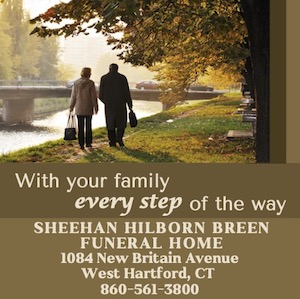 In the Ledger issue of July 4, 2008, we highlighted several Jewish Americans who made notable contributions – both in money and manpower – to the the Revolutionary War effort. They included Francis Salvador, Aaron Lopez, Mordecai Sheftall, Solomon Bush and Haym Salomon.
In the Ledger issue of July 4, 2008, we highlighted several Jewish Americans who made notable contributions – both in money and manpower – to the the Revolutionary War effort. They included Francis Salvador, Aaron Lopez, Mordecai Sheftall, Solomon Bush and Haym Salomon.
Now, as Independence Day nears, we celebrate the lives of other Jewish Americans who played an important role in Colonial America.
Like the stories the Ledger printed in 2008, these are among the 150 illustrated true stories of American heroism included in Jewish Heroes and Heroines of America, written by Seymour “Sy” Brody and illustrated by Art Seiden. The stories are also published as a virtual exhibit on the website of the Florida Atlantic University Library, www.fau.edu/library/judaica9.htm.
In addition to his book, Brody, who died on June 16, 2009 at the age of 88, was the editor of “The Jewish Veteran” from 1996 – 2004, the official publication of the Jewish War Veterans of the USA.
Rebecca Gratz: Dedicated Her Life To The Less Fortunate
Rebecca Gratz was a devout Jew who dedicated her life to the service of the less fortunate in America. She was born in Philadelphia in 1781 into a wealthy and highly esteemed family that supported the American Revolution. When she was 20,
Gratz organized the Female Association for
the Relief of Women and Children of Reduced Circumstances in Philadelphia. Gratz was also one of the founders of the nonsectarian Philadelphia Orphan Asylum, chartered in 1815 and served as its secretary for more
than 40 years.
Sensing that there was a further need to service the needy and the unfortunate in the Jewish community, she organized and founded the Female Hebrew Benevolent Society in 1819. She created the Jewish Foster Home and Orphan Asylum in 1855 and led in the establishment of the Fuel Society and the Sewing Society.
Gratz was always concerned about the religious education of Jewish children. In 1818, under the sponsorship of the Female Hebrew Benevolent Society, she created the Hebrew Sunday School Society of Philadelphia, serving as its president until 1864. The school was opened to children from all parts of the Philadelphia Jewish community without a fee.
Gratz’s fame was widespread and many believed that she was the prototype for Sir Walter Scott’s Rebecca, a Jew, in his novel, Ivanhoe. She died in 1869 at the age of 88 and was buried in the Mikveh Israel Cemetery in Philadelphia.
Jacob Barsimson: Paved the Way for Full Citizenship Rights
The first Jewish settler who came to New Amsterdam, later to be called New York, was Jacob Barsimson, a Hollander who arrived on August 22, 1654. He was soon followed by others. The Jews settling in New Amsterdam were seeking the equality of free men in a land of liberty where they could freely worship and have equal opportunities and obligations alongside the Christian citizens.
Barsimson and the other Jews found that New Amsterdam was no different from where they came. Governor Peter Stuyvesant treated them as separate citizens. They couldn’t engage in retail trade, practice handicrafts, hold public position, serve in the militia or practice their religion in a synagogue or in gatherings.
On September 22, 1654, Stuyvesant wrote to the Amsterdam Chamber of Commerce to complain about the presence of Jewish refugees from Brazil who had recently arrived in New Amsterdam.
In the meantime, Barsimson, Asser Levy, Abraham de Lucena, Jacob Cohen Henricques and other New Amsterdam Jews kept putting pressure on Stuyvesant for full citizenship rights. They insisted on the right to serve in the militia and do guard duty on the walls of the city to protect the settlers and cattle, which were kept inside the walls at night, from the raids and attacks of the Indians and the New England settlers. They continued their petitions and pressure until the Governor finally granted them full citizenship.
Barsimson and the other Jews proudly did their guard duty on the walls of the colony alongside the Christian militia men. When the British conquered New Amsterdam and changed its name to New York, the Jewish settlers continued to have full citizenship. This tiny group of Jews displayed courage and bravery, under the leadership of Jacob Barsimson, to obtain citizenship for all Jews coming to the New World for the next 300 years.
Mordecai Manuel Noah: An Ardent Patriot and Zionist
Mordecai Manuel Noah was the most influential Jew in the United States in the early 19th century. He was an editor, journalist, playwright, politician, lawyer, Court of Appeals judge, New York Port surveyor, a major in the New York military and, foremost, an ardent utopian Zionist.
Noah was born July 19, 1785, in Philadelphia of Portuguese Jewish ancestry. His father, Manuel M. Noah, served with General Marion in the Revolutionary War and contributed a considerable sum of money to the cause. When Noah was 10, his mother died and he went to live with his maternal grandfather. He stayed with that family until he became old enough to go to Charleston, S.C., where he studied law and he became involved in politics.
An ardent patriot, at the age of 26 Noah wrote forceful editorials in a Charleston newspaper advocating war (of 1812) with England. As a result of his editorials, he was appointed the U.S. consul to Tunis. In 1815, he returned and settled in New York to engage in journalism and politics. He published the National Advocate and edited several other newspapers.
Noah broke off his relationship with the powerful political machine of the Tammany Society and opposed them by publishing the New York Enquirer from 1826 to 1829. He was a prolific playwright, which reflected his patriotic fervor. He wrote Fortress of Sorrento (1808), She Would Be A Soldier (1819), and Siege of Tripoli (1820), which was produced many times under different titles.
A founder of New York University, in 1825, Noah helped purchase a tract of land on Grand Island in the Niagara River near Buffalo, N.Y., where he envisioned a Jewish colony to be called Ararat. The project failed. After this disappointment, he realized that Palestine was the only answer for a homeland for Jews. He lectured and wrote on the need for such a homeland, expressing ideas that preceded those of Leo Pensker and Theodor Herzl.
Noah was very active and supportive of the congregations of Mikveh Israel in Philadelphia and Shearith Israel in New York. He was the best known Jew in America when he died of a stroke in 1851.
Colonel Leon Dyer: Served His Country In Three Wars
Colonel Leon Dyer was an Orthodox Jew who fought in three wars for his country to secure freedom and justice. Born in Baltimore, Md., he was the son of Philip Maximillian Dyer, who arrived in America from Germany in 1812.
Dyer and his father were very active in the Jewish community. He was in the leadership of a group that started and built Baltimore’s first synagogue. He later became president of the Baltimore Hebrew Congregation. He and his father helped launch the United Hebrew Society of Baltimore.
In 1835, Dyer went to New Orleans on a business trip for his family’s meat-packing business when the Governor of Louisiana talked him into taking the job of quartermaster general of the State Militia. About this time, Stephen Austin, a leader of the American settlers living in Texas, announced that they had declared their independence from Mexico and that they were in need of volunteers to help repulse the attack of the Mexican Army. After Mexican General Santa Anna led his army into Texas and slaughtered the defenders of the Alamo, Dyer and several hundred from New Orleans joined volunteers from the rest of the country to help the Texans. Arriving in San Jacinto as the battle was ending, Dyer and his men helped in the final defeat of the Mexican army. He served as part of the honor guard escorting Santa Anna to Washington, D.C. after he was captured.
After the war, Dyer joined the American army, serving as a major on the staff of General Winfield Scott. One of Dyer’s junior officers was Lt. George B. McClellan, who later became a famous Civil War general. Dyer was with General Scott in Florida when they engaged the Seminole Indians, who massacred 100 American soldiers.
Dyer returned to Baltimore and, from 1840 to 1845, he devoted himself to business and religious duties. He was very active in the building of the Baltimore Hebrew Congregation Synagogue on the corner of Lloyd and Walter Streets. Once again, Dyer responded to his country’s call when he fought in the Mexican War (1845-47) as a colonel under the command of General Scott. In 1852 President Millard Fillmore enlisted Dyer to deliver confidential dispatches to the Prussian government in Berlin. Dyer was commended for this mission.
He died in Louisville, Ky. at the age of 76.
ON THE COVER
“Old Glory”– A living memorial to 10 men
Howard Lasher of Newtown was attending a memorial service at St. Patrick’s Cathedral in New York City for ten friends who perished in the assault on the World Trade Center on Sept. 11, 2001, when a high school color guard marched solemnly down the church’s center aisle carrying an American flag. It was at that moment that Lasher was struck with the idea of how to create his own personal living memorial to the men who had worked with him at the American Stock Exchange.
“They died because they were American,” Lasher told the Danbury Times. “The flag represents everything America stands for – strength, liberty and freedom.”
And so, in Oct. 2011 Lasher approached Connecticut artist David Merrill to paint a flag across six adjoining trees at the entrance to his Newtown home.
“Bikers, truckers, people from all walks of life and all ages come by on Memorial Day and July Fourth and lay flowers and cards at the base of the trees,” Lasher told the Danbury Times.
Among the many people photographing the flag painting was professional photographer Carol Gibson. “The flag makes me feel patriotic,” Gibson told the Danbury Times. “It’s very beautiful at night and strikes you as you’re driving by.” Gibson’s photograph, called “Old Glory, which appears on the cover of this week’s Ledger, also hangs in the office of U.S. Senator Richard Blumenthal, New York Stock Exchange in Manhattan, the Utah Jazz Basketball Stadium and numerous banks, schools and businesses.








 Southern New England Jewish Ledger
Southern New England Jewish Ledger









